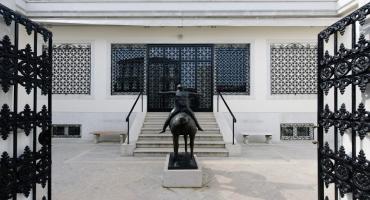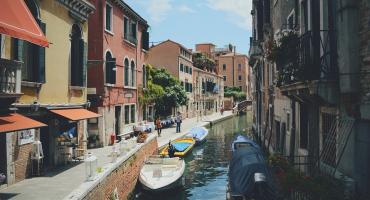Salt has always been an essential product, both for nutrition and food preservation. In prehistory too salt mines were used, in Hallstatt or in Hallein near Salzburg, but from ancient times on, to make salt saltworks were used above all, special structure realized in cost marine areas.
The high-Adriatic lagoons such as Chioggia until Equilo (Jesolo) offered the possibility to produce and trade salt and thanks the many proofs we have, we can say Venice lagoon too was used for salt from Ancient Roman times (and we have proofs of a saltworks in San Giorgio).
Salt was used as bargaining chip to buy hinterland products such as wheat and thus, following trades born, from the great marketplace in Torcello to Metamauco and Rivo Alto. Around 1200 the lagoon was very different from the one we know today, some saltworks were where today are palaces and private houses in Canaleclo (Cannaregio) and Dorsoduro.
The term fondamenta have its roof from the walkable bank along a canal originated from fondamentum salinarum, which is from the name indicating a saltwork complex.
Atthe end of 12th century, period of maximum salt production, in Venice there were 119 fondamentum salinarum, 1/3 of which were in the northern lagoon (the majority in Murano, Sant’Erasmo, Torcello) and 2/3 in the southern lagoon, in Chioggia. In the northern lagoon, salt mines were gradually abandoned and replaced by fishing structures, until they disappeared during the 4th century.
From 1240 Venice started to import salt from the Mediterranean Sea, obtaining the control over Chioggia and Cervia’s salt saltworks. Thus, an administrative organ for this important product’s management was created: the Magistrato al Sal (the “salt magistrate”).
This huge salt trade required a place to be stored; thus, Venetian built the fonteghi, residential and representation houses, that were at the same time houses and marketplaces.
At the beginning of 1400 they were built along the fondamenta delle Zattere (one of the main docking places for rafts bringing goods to Venice), the monumental Magazzini del Sale.
These special warehouses, called Saloni, have particularly strong structure to bear the weight of stocked salt (they could hold up to 4500 tons of goods). They have been used as salt werehouses even many years after the fall of the Republic of Serenissima (1797).
Around 1830 the Magazzini went under an excellent renovation by the architect Alvise Pigazzini. Then after a decadent period during the 20th century, they were renovated again and given back to the city. From 1960, they are property of the Municipality, with different uses, mainly for exhibitions or deposit for boats storage.
Useful Information:
Opening hours:
The exhibition spaces of the Emilio and Annabianca Vedova Foundation are temporarily closed.
Price:
The exhibition spaces of the Emilio and Annabianca Vedova Foundation are temporarily closed.
Contacts:
Tel. + 39 041 5226626
E-mail: info@fondazionevedova.org
For any further information, please check on website: https://www.fondazionevedova.org/ and https://www.fondazionevedova.org/magazzino-del-sale
Address: Zattere, Dorsoduro 266, 30123 Venezia
How to get there: water-bus, stop "Santo Spirito"
Copyright Notice: these images have been sourced online. If you are the copyright holder and wish for it to be removed, please contact us.



